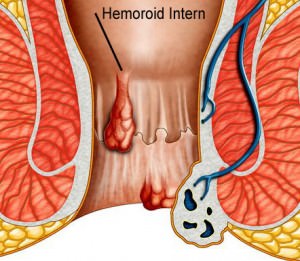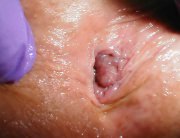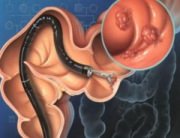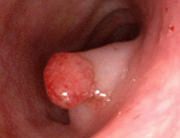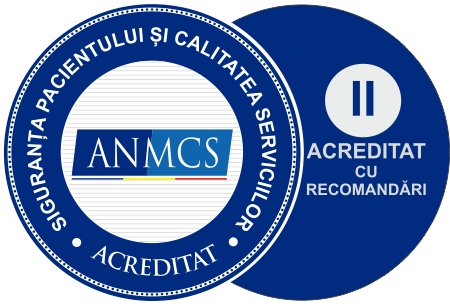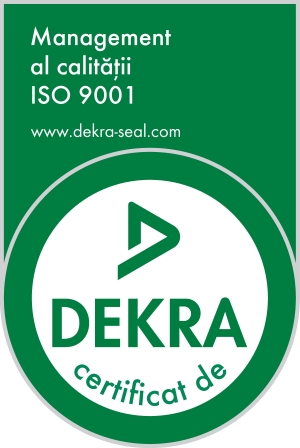 Internal Haemorrhoids may occur as a consequence of the increase of the pressure exerted on the internal haemorrhoid veins. This pressure increase leads to the onset of some symptoms, such as anal discomfort or the presence of bright red blood on the toilet paper (rectorrhagia).
Internal Haemorrhoids may occur as a consequence of the increase of the pressure exerted on the internal haemorrhoid veins. This pressure increase leads to the onset of some symptoms, such as anal discomfort or the presence of bright red blood on the toilet paper (rectorrhagia).
The factors that may lead to the development of this condition include: stool movement straining (defecation straining), obesity or a diet rich in fats and poor in fibres. The treatment strategy involves dietary changes and other ways of adjusting the intestinal transit. If these changes to not relieve the symptoms, the treatment of the haemorrhoidal disease through modern, non-surgical methods is recommended, and in very advanced cases, the surgical intervention is advised.
What Are Internal Haemorrhoids?
The term “haemorrhoids” refers to the situation in which the veins located in the anal and lower rectum areas are enlarged and inflamed. The veins located in the anal-rectal area are represented by the internal and external haemorrhoid veins. As their name suggests, internal haemorrhoids affect the internal haemorrhoid veins.
What Causes Haemorrhoids?
Internal haemorrhoids are caused by the increase of the pressure on the internal haemorrhoid veins. Several factors can cause this pressure increase, such as:
- straining to defecate or factors that can negatively influence the intestinal transit, such as sitting for long periods of time;
- pregnancy;
- age;
- chronic constipation or diarrhea;
- cirrhosis;
- obesity;
- a diet rich in fats and poor in fibres.
Symptoms of internal haemorrhoids:
The most frequent symptom is the presence of bright red blood in the stool, on the toilet paper or in the toilet bowl.
Other symptoms may include:
- slight discomfort in the anal area;
- intestinal transit pressure sensation.
Pain is not a common internal haemorrhoid symptom. However, internal haemorrhoids may protrude (exit the ends of the anal canal), becoming irritated and painful. This type of haemorrhoids are called “protruding haemorrhoids”. If not treated, the protruding internal haemorrhoid may stay inside the anus. In this case, you may notice stains on the underwear.
How Are Internal Haemorrhoids Diagnosed?
In order to diagnose internal haemorrhoids, the physician will ask you a number of questions (known as anamnesis), followed by a detailed physical examination. The physician may also request additional tests. In the cases of rectal or stool bleeding, a detailed evaluation and the correct physician diagnosis are very important. Anal bleeding can also be a symptom of other digestive diseases, including the colon or rectal cancer. A detailed evaluation of the rectal area in order to detect internal haemorrhoids supposes the examination with an anoscope – a cylindrical tube, equipped with a high performance optical system to view the internal haemorrhoids – or with a rectoscope, for a detailed examination of the entire rectal area.
In order to eliminate the other causes of the GI bleedings, the physician may examine the rectum or the lower area of the colon (sigmoid) through a rectosigmoidoscopy, or of the whole colon through a colonoscopy.
How Are Internal Haemorrhoids Treated?
In most cases, internal haemorrhoid treatments focus on:
- relieving the symptoms;
- decreasing the haemorrhoid vein pressure by increasing the fibre and liquid intake;
- adjustment of the intestinal transit.
Internal haemorrhoid treatment methods may include:
- sitz baths several times a day;
- increase of the fibre and liquid intake;
- laxatives;
- OTC drugs to relieve itching and inflammation.
In most cases, internal haemorrhoid symptoms improve in a few days. If the symptoms do not disappear, haemorrhoid protrusion or thrombosis occurs or in the case of repeated bleedings, emergency surgical intervention may be required.
Some of the haemorrhoid treatment methods are:
- rubber band ligation;
- sclerotherapy;
- infrared coagulation;
- haemorrhoidectomy.
Internal Haemorrhoids and Pregnancy:
Internal haemorrhoids are very frequent in pregnant women. Both the pressure exerted by the fetus, and the hormonal changes may lead to an enlargement of the internal haemorrhoid veins. These veins are subjected to additional pressure during childbirth. However, in most women, the pregnancy-related internal haemorrhoid condition is temporary.
How To Prevent Haemorrhoids?
The best ways to prevent haemorrhoids are:
- maintaining a normal stool consistency, in order to avoid straining and decrease defecation pressure;
- the elimination of the stool as soon as possible after the defecation sensation.
Physical exercise, including walking, and a diet rich in fibres determine a normal stool consistency, which helps prevent constipation and defecation straining.
For haemorrhoid pictures, click here

